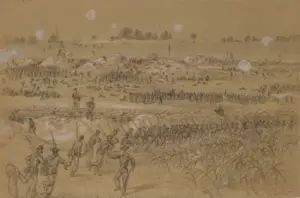BATTLE SUMMARY
The Battle of the Crater was a part of the Siege of Petersburg. During the siege, the armies were aligned along a series of fortified positions and trenches more than 20 miles long, extending from the old Cold Harbor battlefield all the way to areas south of Petersburg.


